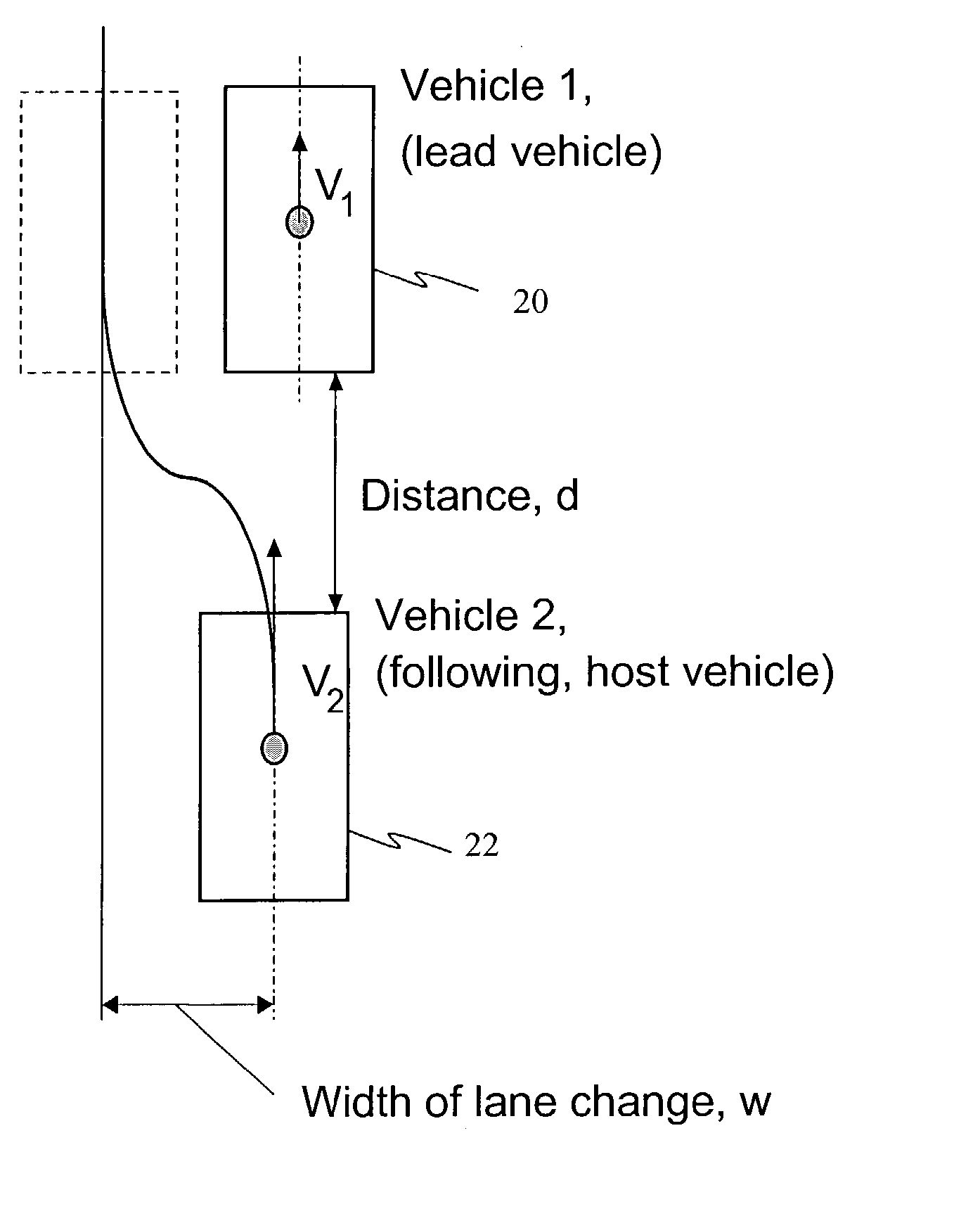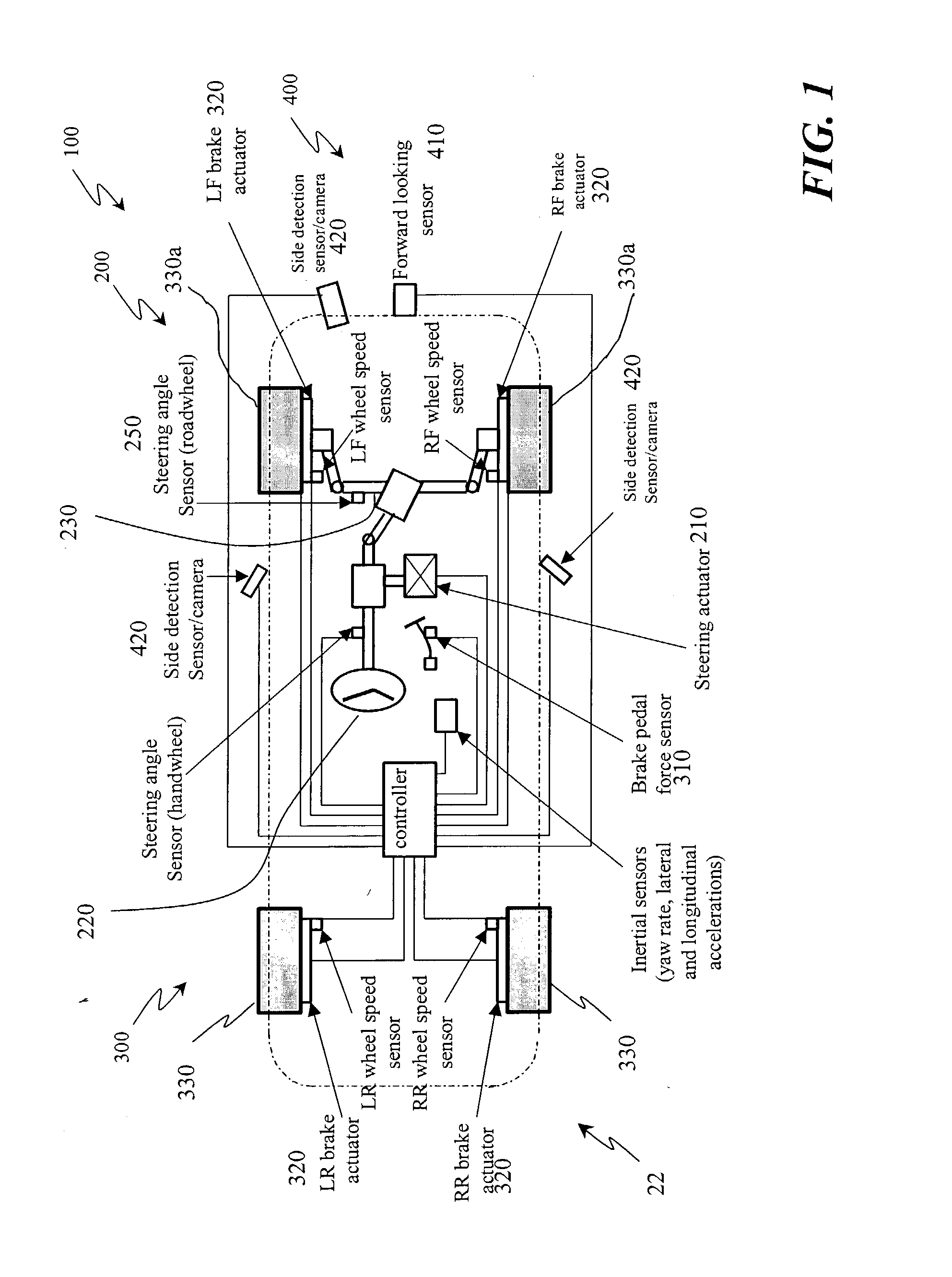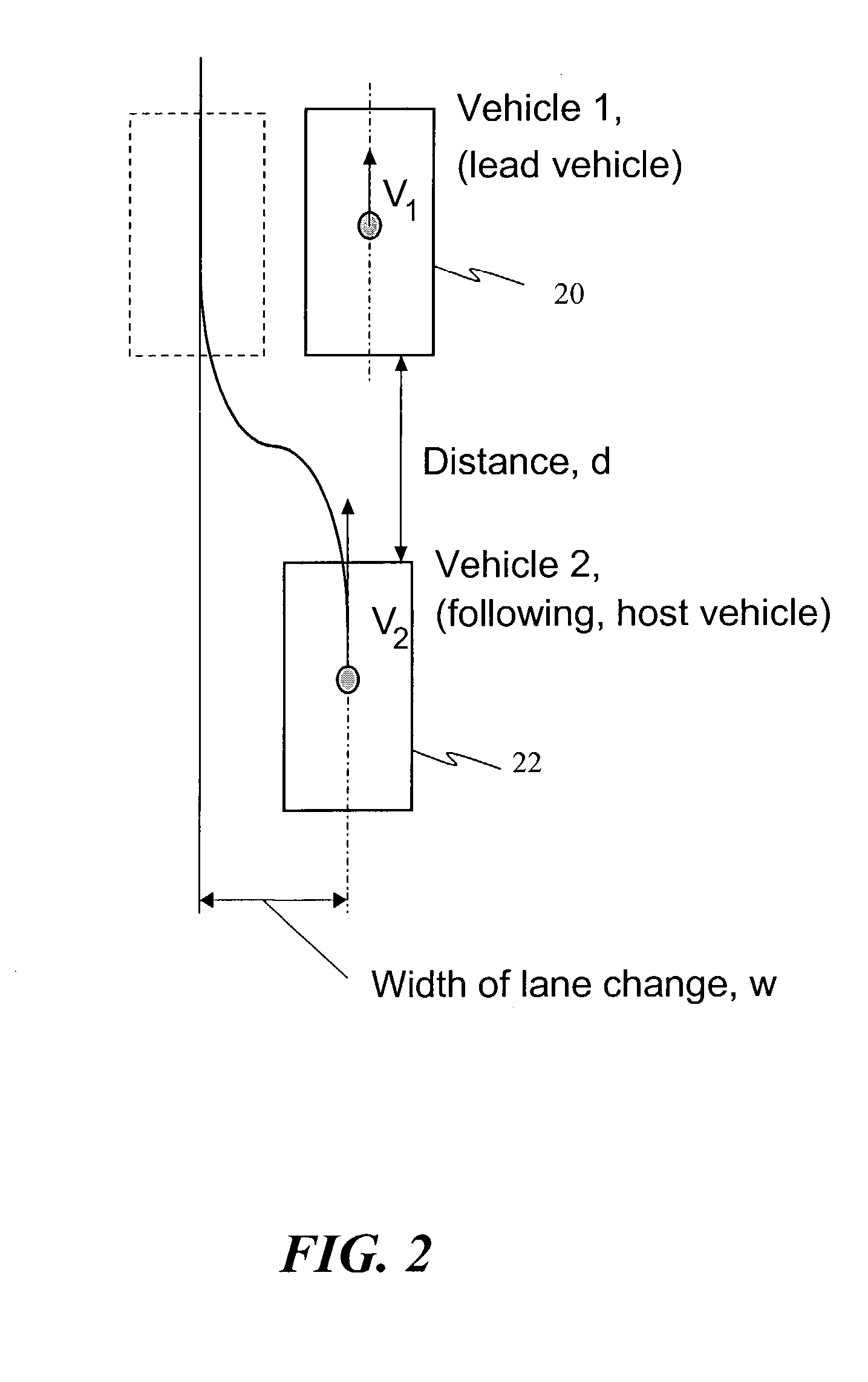Collision avoidance with active steering and braking
a technology of active steering and braking, applied in the direction of braking components, non-vehicle mounted steering controls, process and machine control, etc., can solve problems such as loss of vehicle control
- Summary
- Abstract
- Description
- Claims
- Application Information
AI Technical Summary
Benefits of technology
Problems solved by technology
Method used
Image
Examples
Embodiment Construction
[0024] Disclosed herein is an algorithm to automatically perform a collision avoidance maneuver. In an exemplary embodiment an active steering system is optionally employed with braking in order to automatically perform an emergency lane change maneuver when it is determined that a collision cannot be prevented by braking only, but can be prevented by steering (around the obstacle) and braking. The determination is based on the information about the host vehicle speed, the speed of obstacle, the distance between the host vehicle and the obstacle, the lateral offset in the lane change necessary to avoid colliding with the obstacle, brake and steering response times, and lateral and longitudinal accelerations achievable during an emergency collision avoidance maneuver. Based on this information in an exemplary embodiment, minimum distances necessary to avoid collision by braking only and by braking and steering between the obstacle (also denoted as a lead vehicle) and the host vehicle...
PUM
 Login to View More
Login to View More Abstract
Description
Claims
Application Information
 Login to View More
Login to View More - R&D
- Intellectual Property
- Life Sciences
- Materials
- Tech Scout
- Unparalleled Data Quality
- Higher Quality Content
- 60% Fewer Hallucinations
Browse by: Latest US Patents, China's latest patents, Technical Efficacy Thesaurus, Application Domain, Technology Topic, Popular Technical Reports.
© 2025 PatSnap. All rights reserved.Legal|Privacy policy|Modern Slavery Act Transparency Statement|Sitemap|About US| Contact US: help@patsnap.com



